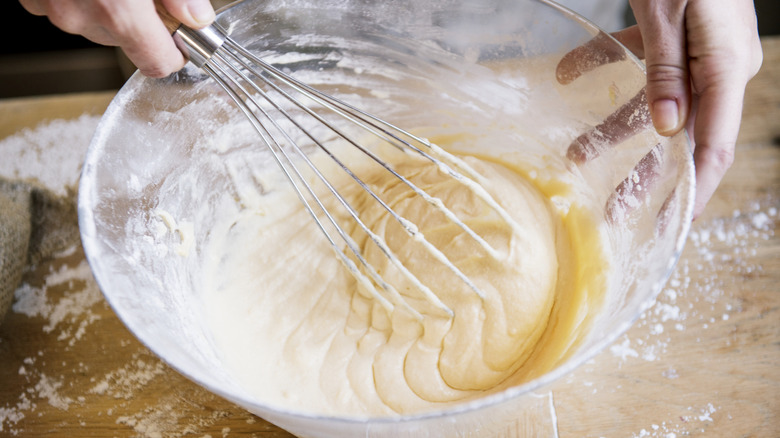Why Carla Hall Believes Cake Batter Should Be Lumpy
Professional chef, cookbook author, and TV personality Carla Hall is full of delightful culinary insights, including a few that will seriously surprise you, like how to soak up food grease or how to achieve perfectly cooked grits. Hall recently handpicked a handful of helpful hints and shared them via Redbook, including how to choose the juiciest fruits at the market and how to preserve your pantry's herbs — or how to know when to throw your herbs away. But one of her most remarkable tips resides in the baking realm: Your lumpy, bumpy batter is not only workable, it's welcome.
It's a common belief among home bakers that lumps are the enemy. And if you've ever bitten into a cookie and found a solid pocket of brown sugar or, even worse, unincorporated baking soda, it's easy to see why. But, as Hall notes, when you mix your batter just up until the point of incorporation, you should still see lumps in your batter — and that's a good thing.
Those lumps are usually just small pockets of air that will release on their own while baking. When you beat your batter past the point of just incorporated, with the well-intentioned goal of a perfectly smooth dessert, you're actually knocking out all of the air that will make your favorite treats light and airy. The more air you lose while mixing, the tougher and denser your dessert will be. No one wants a flat muffin or a firm cake, so be sure to keep your mixing to a minimum.
How to mix up the perfect batter, according to Carla Hall
Overmixing your batter is the secret menace of many, if not all, baked goods. Carla Hall suggests that a great way of circumventing this phenomenon is by gently folding your mixture, rather than beating it. When folding, you use your spatula to slowly lift your batter from the bottom of the bowl and spoon it back over itself in a large circular motion. Folding does take a bit more time, but you'll be able to see and taste the results. The batter that you spoon into your baking dish will be surprisingly fluffy, and your finished product will be light and airy.
Whether folding or gently mixing, it can be difficult to judge when you've reached the just incorporated stage. If it's not for the lack of lumps, how do you know when your batter is ready to bake? First, if your recipe includes eggs, make sure you can no longer see any streaks of yolks or whites. Second, make sure your sugars have dissolved as your spatula moves through the mixture (and do try to break up lumpy brown sugar before adding it to any batter). Finally, carefully scrape along the bottom of your bowl, as well as the sides, to find hidden rivulets of flour. As soon as you can't see any flour at all, your batter is ready to bake.

